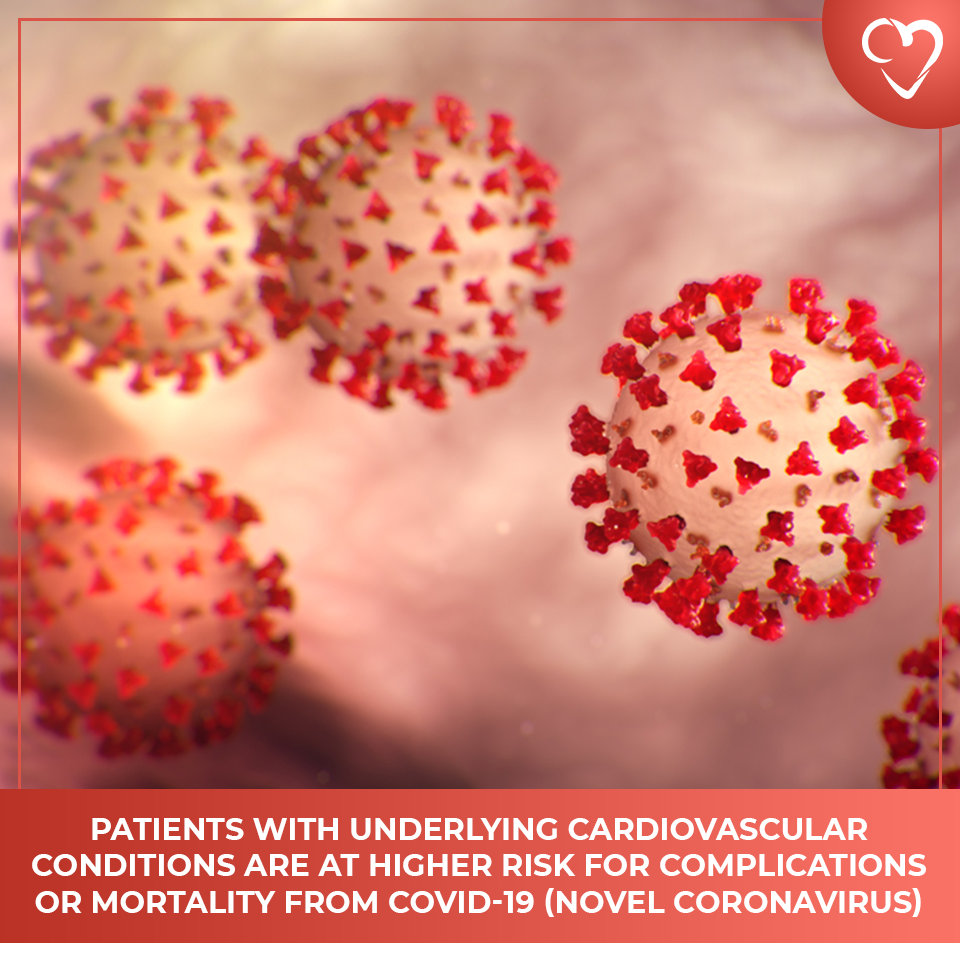
As the CDC warns that COVID-19 (more widely known as the novel coronavirus) will likely spread through the United States, we wish to share some information on comorbidities of COVID-19 with cardiovascular disease and diabetes.
Symptoms of COVID-19 present similar to those in influenza. They include a runny nose, cough, sore throat, and possibly headaches or fever. While symptoms of COVID-19 can be relatively mild, those with compromised health or immunities can develop pneumonia from it. Individuals in China’s Wuham who have died from COVID-19 have tended to be those who already have underlying conditions. One of those conditions is heart disease. The death rate from COVID-19 is around 2 percent (compared with around 0.1 percent from influenza and 10 percent in the SARS epidemic in 2002). However, the COVID-19 mortality rate jumps to 6 percent in hypertensives, 7.3 percent in diabetics, 10.5 percent in those with cardiovascular disease, and 14.8 percent for patients over the age of 80.
The American College of Cardiology warns that patients with underlying conditions are at higher risk for complications or mortality from COVID-19, and that up to 50 percent of those hospitalized with COVID-19 have had a chronic medical illness. Meanwhile, 40 percent of those hospitalized with confirmed COVID-19 have cardiovascular disease. Dr. Orly Vardeny, associate professor of medicine at the Minneapolis VA Health Care System and University of Minnesota, stressed to the American Heart Association that the higher mortality of those with comorbidities doesn’t mean they have a higher likelihood of contracting COVID-19. “It just means that those folks are more likely to have complications once they do get it,” she said.
Further, ACC warns, “Viral illness is a well-known destabilizing factor in chronic cardiovascular disease.” Having multiple comorbidities (diabetes mellitus, obesity, COPD) also increases the risk.
So what can the general public do to prevent the spread of novel coronavirus? The virus is spread through droplets and can live for substantial periods outside the human body. So following flu prevention techniques are tantamount. Wash hands and sanitize surfaces. Social distancing, such as working from home and/or cancelling meetings, may also be warranted. Remember that some with novel coronavirus are asymptomatic. In addition, older adults are less likely to present with typical symptoms of pneumonia such as fever, which merits assessment for other symptoms such as unexplained cough, shortness of breath, or confusion.